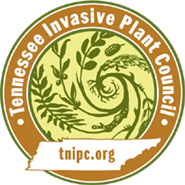Potamogeton crispus L.
Curly Pondweed

Description
Stems
Stems and rhizome are sparingly branched and terete to slightly flattened and angular, and creeping at the base.
Leaves
Leaves are sessile, broadly linear to narrowly oblong, 3 to 8 cm long and 3 to 10 mm wide. They are ungulate or crispate, with serrulate margins, and obtuse or rounded apices. Stipules are 5 to 10 mm long, convolute to shortly connate, membranous and evanescent.
Flowers
Flowers are cylindrical spikes composed of 2 to 4 whorls of opposite flowers on peduncles up to 5 cm in length. Emergent flowers appear beginning in April through July. Flowers are brown, inconspicuous, and wind pollinated.
Fruit
Fruits are ovate, flat with a pointed beak and are 3.5 to 4 mm long, with significant dorsal keels that are sparsely dentate on the lower ridge. In midsummer plants form vegetative buds (turions) from which new growth starts in fall or winter.
Images
Photo: Leslie J. Mehrhoff, University of Connecticut, Bugwood.org
More images of Potamogeton crispusLife History
Potamogeton crispus is a perennial, submerged, aquatic herb. Turions and plant fragments can be carried on boats, trailers, motors and fishing gear from one water body to another, allowing spread of the pondweed.
Habitat
Curlyleaf Pondweed tolerates fresh or slightly brackish water and can grow in shallow, deep, still or flowing water. Plants can grow in clear or turbid water, but are mostly shade intolerant.
Origin and Distribution
Curlyleaf pondweed is native to Eurasia. It has been reported in all states but Maine. Plants were introduced to the United States, possibly as a hitchhiker on boats or as an aquarium plant, in the mid-1800s. Curly pondweed can occur in lakes, streams, ponds, reservoirs and freshwater marshes less than 2M in depth.
Management Recommendations
Proper prevention techniques are essential to curb the spread of this aquatic invasive. An effective prevention and remediation program also addresses the overall health of a body of water. Maintaining a healthy ecosystem with diverse native aquatic plants and animals as well as minimizing nutrient and pollutant inputs will deter invasions. Once introduced,
Potamogeton crispus spreads rapidly. Long-term management requires the reduction or elimination of turions to interrupt the lifecycle.
Mechanical Control
To have the maximum benefit, manual and mechanical control efforts should be undertaken in the spring or early summer. Mechanical control includes raking, hand-cutting or harvesting vegetation. Raking and hand cutting remove plants at the sediment surface, and there is some evidence that early season cutting of pondweed can prevent turion production. Harvesting generally removes the top 5 feet of the plant. Curlyleaf Pondweed can spread from plant fragments, so it is important to clean all vegetation off boats and equipment before leaving water access.
Chemical Control
There are a small number of aquatic herbicides that can be used to control Curlyleaf Pondweed. In Minnesota, good to excellent control was obtained using formulations of diquat and endothall. These chemicals can be used in small areas and will usually knock it down within two weeks. The best time for treatment is in spring or early summer when natives are still dormant and temperatures are low enough for endothall to be effective. In early experiments with fluridone production of turions was completely inhibited following early season treatments. Fluridone usually has to be applied to an entire lake and requires 30 days to knock down.
Habitat Manipulation
Habitat manipulation such as draw-downs and dredging can also be used to manage Curlyleaf Pondweed. Fall drawdown can kill the plants by exposing them to freezing temperatures and desiccation. Dredging can be used as a control by increasing the water depth. In deep water, the plants do not receive enough light to survive. This method can be detrimental to desired plants, as all macrophytes would be prevented from growing for many years. This high level of disturbance may also create favorable conditions for the invasion of other invasive species.

